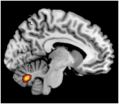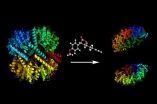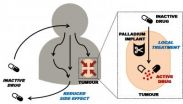(Press-News.org) A group of researchers at the Institute for Research in Immunology and Cancer (IRIC) of Université de Montréal discovered a promising new approach to treating leukemia by disarming a gene that is responsible for tumor progression. That gene, known as Brg1 is a key regulator of leukemia stem cells that are the root cause of the disease, resistance to treatment and relapse.
Julie Lessard, principal investigator and her colleagues at IRIC have spent the past four years studying that gene in collaboration with another research group at Stanford University in California. The results of this study are reported this week in the prestigious scientific journal Blood.
"When we removed the Brg1 gene, the leukemia stem cells were unable to divide, survive and make new tumors. In other words, the cancer was permanently shut down", Lessard says.
One difficulty with targeting cancer stem cells is that many genes essential for their function are also essential for normal stem cells, and therapies targeting them can end up harming healthy stem cells as well. "Strikingly, we showed that the Brg1 gene is dispensable for the function of normal blood stem cells, making it a promising therapeutic target in leukemia treatment" explains Pierre Thibault, principal investigator at IRIC and co-author in this study.
The story showed striking results on laboratory animals and human leukemia cells but is still a long way from being transposed into the clinic. "The next step will be to develop a small-molecule inhibitor to successfully block Brg1 function in leukemia, thus demonstrating the clinical relevance of this discovery", states Guy Sauvageau, chief executive officer and principal investigator at IRIC as well as clinical hematologist at the Hôpital Maisonneuve-Rosemont and co-author in this study.
The group is now performing experiments to identify such drugs that can disarm the Brg1 gene, thereby stopping leukemia stem cells from generating malignant cells.
Cancer stem cells appear to be more resistant to radiotherapy and chemotherapy than the 'bulk' of the tumor and therefore, are often responsible for cancer relapse. As such, inhibiting residual leukemia stem cells from dividing is the key to obtain irreversible impairment of tumor growth and long-term remission in patients. "Our recent studies identified the gene Brg1 as a regulator that governs the self-renewal, proliferative and survival capacity of leukemia stem cells. Therefore, targeting the Brg1 gene in leukemia stem cells may offer new therapeutic opportunities by preventing the disease from coming back", Lessard concludes.
INFORMATION:
Cited Study: Buscarlet M, Krasteva V, Ho L, Simon C, Hébert J, Wilhelm B, Crabtree GR, Sauvageau G, Thibault P, Lessard JA
Essential role of BRG, the ATPase subunit of BAF chromatin remodeling complexes, in leukemia maintenance. Blood. 2014 Jan 29. [Epub ahead of print]
A promising new approach for treating leukemia discovered
The essential role of the BRG1 gene
2014-02-13
ELSE PRESS RELEASES FROM THIS DATE:
How memory and schizophrenia are connected
2014-02-13
Many psychiatric disorders are accompanied by memory deficits. Basel scientists have now identified a network of genes that controls fundamental properties of neurons and is important for human brain activity, memory and the development of schizophrenia. Their results have been published in the online edition of the US journal Neuron.
The ability to hold transitory information - e.g. memorizing a telephone number - is a fundamental function of the human brain. This so-called working memory enables us to understand the world that surrounds us. To keep the working ...
Asian longhorned beetles pheromone could be used to manage pest
2014-02-13
Female Asian longhorned beetles lure males to their locations by laying down sex-specific pheromone trails on tree surfaces, according to an international team of researchers. The finding could lead to the development of a tool to manage this invasive pest that affects about 25 tree species in the United States.
"Tens of thousands of hardwood trees, mostly maples, have been cut down and destroyed in New York, Ohio and Massachusetts because of the Asian longhorned beetle," said Kelli Hoover, professor of entomology, Penn State. "We discovered a pheromone produced by females ...
Can-do plan gets women trimmer, healthier, and cuts hot flashes
2014-02-13
CLEVELAND, Ohio (Thursday, February 13, 2014)—A woman can beat middle-aged spread, her disease risks, and her hot flashes with the help of her healthcare provider. And even a short term program can spell success for women and fit into a busy provider's practice, shows a demonstration obesity-fighting and health risk reduction program detailed in an article just published online in Menopause, the journal of The North American Menopause Society (NAMS).
Making lifestyle changes can take a lot of work. Programs that have successfully helped women lose weight and reduce their ...
Immunologists from the University of Bonn topple dogma
2014-02-13
An international team of scientists under the leadership of the University of Bonn disproves a dogma: To date, immunologists have assumed that the macrophages functioning as "scavenger cells" can be classified into two different forms. In an extensive search, the researchers have now discovered that these immune cells turn into far more different manifestations. These findings also give rise to completely new therapeutic approaches for many widespread diseases. The results are now being published in the renowned journal Immunity.
In the body, macrophages go on patrol ...
Books rate more negatively after winning award, study finds
2014-02-13
Looking for a good book? Stay away from the award-winning section of the bookstore or library.
New research from Amanda Sharkey of the University of Chicago Booth School of Business finds that a book read after winning a prestigious award will likely be judged more negatively than if it's read in its pre-award days.
In "The Paradox of Publicity: How Awards Can Negatively Affect the Evaluation of Quality," to be published in the March issue of Administrative Science Quarterly, Sharkey and colleague Balázs Kovács of the University of Lugano analyze thousands of reader ...
Study: Beauty not disease motivates teens to wear sunscreen
2014-02-13
After offering information about UV light and sun-protective behaviors, the two health-ed
videos diverge: one describes the increased skin cancer risk of UV exposure and the other
describes effects on appearance including wrinkles and premature aging. Which of these two
videos do you think caused teenagers to use more sunscreen six weeks after it was shown? A
University of Colorado Cancer Center study shows that while teens who watched both videos
learned and retained the same amount of knowledge about UV light and sun-protective behaviors,
only the teens who ...
Air pollution increases risk for hypertension in pregnant women
2014-02-13
GAINESVILLE, Fla. — Breathing the air outside their homes may be just as toxic to pregnant women — if not more so — as breathing in cigarette smoke, increasing a mom-to-be's risk of developing deadly complications such as preeclampsia, according to findings from a new University of Florida study.
UF researchers compared birth data with Environmental Protection Agency estimates of air pollution, finding that heavy exposure to four air pollutants led to a significantly increased risk for developing a high blood pressure disorder during pregnancy. The research was published ...
Light-induced degradation in amorphous silicon thin film solar cells
2014-02-13
This news release is available in German. Researchers at the Helmholtz Center Berlin (HZB) have taken a leap forward towards a deeper
understanding of an undesired effect in thin film solar cells based on amorphous silicon – one
that has puzzled the scientific community for the last 40 years. The researchers were able to
demonstrate that tiny voids within the silicon network are partly responsible for reducing solar
cell efficiency by some 10 to 15 percent as soon as you start using them. Their work has now
been published in Physical Review Letters (DOI: 10.1103/PhysRevLett.112.066403).
Amorphous ...
Two new weapons in the battle against bacteria
2014-02-13
This news release is available in German.
Proteins are made up of a chain of amino acids and are vital for all cell processes. Proteases are among the most important types of protein. Like "molecular scissors", they cut other proteins at given positions and thereby execute important cell functions. By cutting the amino acid chains to the right length or breaking proteins apart they, for example, activate or deactivate proteins, decompose defective ones or switch signal sequences that serve to transport proteins to their proper position within a cell.
But proteases ...
Metal implants may cut chemotherapy side effects, study suggests
2014-02-13
Cancer patients could one day experience fewer side effects from chemotherapy following a discovery that opens the door for more targeted treatments.
Researchers have identified a possible way of treating tumours that would see doctors place harmless metal implants at the cancer site.
The discovery could make treatment more targeted than existing therapies, avoiding unwanted side effects, such as hair loss, tiredness and nausea. These occur when chemotherapy drugs carried in the blood kill healthy cells as well as cancer cells.
The scientists found that they could ...
LAST 30 PRESS RELEASES:
Scalable and healable gradient textiles for multi‑scenario radiative cooling via bicomponent blow spinning
Research shows informed traders never let a good climate crisis go to waste
Intelligent XGBoost framework enhances asphalt pavement skid resistance assessment
Dual-function biomaterials for postoperative osteosarcoma: Tumor suppression and bone regeneration
New framework reveals where transport emissions concentrate in Singapore
NTP-enhanced lattice oxygen activation in Ce-Co catalysts for low-temperature soot combustion
Synergistic interface engineering in Cu-Zn-Ce catalysts for efficient CO2 hydrogenation to methanol
COVID-19 leaves a lasting mark on the human brain
Scientists use ultrasound to soften and treat cancer tumors without damaging healthy tissue
Community swimming program for Black youth boosts skills, sense of belonging, study finds
Specific depressive symptoms in midlife linked to increased dementia risk
An ‘illuminating’ design sheds light on cholesterol
Who is more likely to get long COVID?
Study showcases resilience and rapid growth of “living rocks”
Naval Research Lab diver earns Office of Naval Research 2025 Sailor of the Year
New Mayo-led study establishes practical definition for rapidly progressive dementia
Fossil fuel industry’s “climate false solutions” reinforce its power and aggravate environmental injustice
Researchers reveal bias in a widely used measure of algorithm performance
Alcohol causes cancer. A study from IOCB Prague confirms damage to DNA and shows how cells defend against it
Hidden viruses in wastewater treatment may shape public health risks, study finds
Unlock the power of nature: how biomass can transform climate mitigation
Biochar reshapes hidden soil microbes that capture carbon dioxide in farmland
Reducing saturated fat intake shows mortality benefit, but only in high-risk individuals
Manta rays create mobile ecosystems, study finds
Study: Mixed results in using lipoic acid to treat progressive multiple sclerosis
Norbert Holtkamp appointed director of Fermi National Accelerator Laboratory
New agentic AI platform accelerates advanced optics design
Biologists discover neurons use physical signals — not electricity — to stabilize communication
Researchers discover that a hormone can access the brain by hitchhiking
University of Oklahoma researcher awarded funding to pursue AI-powered material design
[Press-News.org] A promising new approach for treating leukemia discoveredThe essential role of the BRG1 gene



